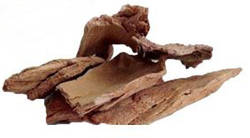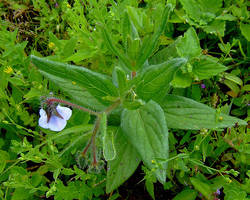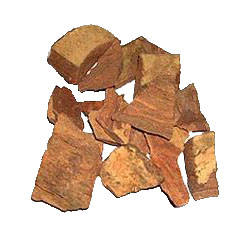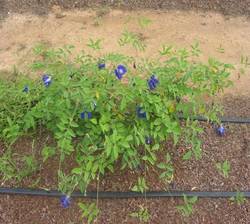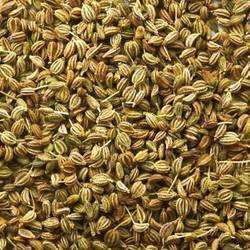| OTHER NAMES |
|
|
| · |
SANSKRIT |
» |
Amala, Amalaka, Amalakah, Amalakam, Amalaki, Amraphalam, Amulki, Dhatri, Dhatri-phala, Dhatriphalam,
Kamu, Sriphalam, Tisya,Umrita, Vayastha
|
| · |
HINDI |
» |
Amla, Amlika, Anvurah, Aoula, Auna, Aonta, Ambala, Aonla, Anwala
|
| · |
URDU |
» |
Amla, Aamla, Amlay taza aur farba, Triphala, Baobarang, Murraba-i-amla, Amla sabz, Khushbu amla,
Guthli, Guthli nikalal hua, Guthli nikala hua, Amal khushk, Amal khusk, Amala khushk, Amla khushk,
Amla khusk, Tirphala
|
| · |
ARABIC |
» |
Amla khushk
|
| · |
ASSAMESE |
» |
Amluki, Amalaki, Amlokhi
|
| · |
BENGALI |
» |
Amla, Meral, Amlaki
|
| · |
KANNADA |
» |
Nellikai, Nelli, Dadi, Dhanya
|
| · |
MALYALAM |
» |
Nellikai, Nelli
|
| · |
MARATHI |
» |
Heikru
|
| · |
TAMIL |
» |
Awla, Aouli, Avla, Avalkati, Avil
|
| · |
TELGU |
» |
Mintu, Mirutupala, Tattari, Tattiri, Nellikkai, Toppi, Nellikkaai, Peru nelli, Toppunelli, Nellikkay, Amalakamu,
Nelli, Usiri, Usrikayi,Usirikai, Triphalamu, Putla yusirika, Pedda usiri
|
| · |
TIBETAN |
» |
Skyu ru ra, Sk yu ru ra, Skyu-ru-ra
|
|
| |
| |
|
|
| DESCRIPTION |
|
A small or medium sized, deciduous tree. Leaves subsessile, closely set along the branchlets, distichous,
narrowly linear, obtuse, having appearance of pinnate leaves. Flowers greenish-yellow, in axillary fascicles
on the leaf bearing branchlets, often on the naked portion below the leaves.
|
| |
|
|
| PHARMACOGNOSY |
|
Root Bark : It occurs in pieces, 4-8 cm long, 2-4 cm broad, curved. Outer surface rugged, often
scaly without any lenticels, colour greenish-sepia to mouse-grey with cracks and fissures, with recurved
edges and irregular wrinkles. Fracture fibrous to granular. Transverse section of root bark shows
rectangular cork cells, outer cortex one layered, consisting of irregular parenchymatous cells with
abundant starch grains, a few starch grains, a few crystals and laticifiers.
Fresh Fruit : Fruit globose, 2.5-3.5 cm in diameter, fleshy, smooth with six prominent lines;
greenish when tender, changing to light yellowish or pinkish colour when mature, with a few
dark specs. Taste sour and astringent followed by delicately sweet taste. Transverse section
of mature fruit shows an epicarp consisting of single layer of epidermis and 2-4 layers of hypodermis.
Dried Mature Fruit : Drug consists of curled pieces of pericarp of dried fruit. Bulk colour grey to black;
pieces showing a broad, highly shrivelled and wrinkled external convex surface to somewhat concave,
transversely wrinkled lateral surface; external surface shows a few whitish specks, occasionally some
pieces show a portion of stony testa. Texture rough, cartilaginous, tough. Taste sour and astringent.
Transverse section of fruit shows epicarp consisting of a single layered epidermis, cell appearing tabular
and polygonal in surface view.
|
| |
|
|
| DISTRIBUTION |
|
This species is paleotropical in its distribution occurring in the Indo-Malesia belt, SriLanka and South China.
Within India, it is reported to be abundant in the deciduous forests of Madhya Pradesh and widely
cultivated in the plains of Jammu & Kashmir, Himachal Pradesh, Uttar Pradesh, Sikkim, Bhutan, Assam
and Western Ghats. This species is globally distributed in the Paleotropics. Within India, it is found in
the mixed deciduous forests ascending to an altitude of 1350 metres on the hills. It is often cultivated
in gardens and homeyards.
|
| |
|
|
| CULTIVATION |
|
It grows best on well drained fertile loamy soil. It thrives well on light as w\well as heavy soils.
It is found even on moderately alkaline and acidic soils. Moderate warm climate favors for the initiation
of floral buds.
|
| |
|
|
| PART (S) USED |
|
FRUIT |
| |
|
|
| DOSE |
|
Swaras 10-20 ml, Churna 3-6 gms. |
| |
|
|
| CHEMICAL CONSTITUENTS |
|
Vitamin c, Carotene, Nicotinic acid, Riboflavin, D-glucose, D-fructose, Myoinositol, Pectin,
D-galacturonic acid,D0arabinosyl, D-xylosyl, L-rhamnosyl, D-glucosyl, D-mannosyl, Embicol, Mucic
|
| |
|
|
| PHYSICAL CONSTITUENTS |
|
Root Bark (Total ash 13.6 %, Acid insoluble ash 0.61 %, Alcohol soluble extractive 7.1 %, Water soluble
extractive 72 %)
Fresh Fruit (Foreign matter 2 %, Total ash 7 %, Acid insoluble ash 2 %, Alcohol soluble extractive 40 %,
Water soluble extractive 50 %, Moisture content 80 %)
Dried Nature Fruit ( Foreign matter 3 %, Total ash 7 %, Acid insoluble ash 2 %, Alcohol soluble
extractive 40 %, Water soluble extractive 50 %)
|
| |
|
|
| AYURVEDIC PROPERTIES |
|
|
| · GUNA (Quality) |
| · RASA (Taste) |
| · VIPAK (Metabolism) |
| · VIRYA (Potency) |
| · PRABHAV (Impact) |
|
|
| · Guru, Ruksha, Sheet |
| · Madhur, Amal, Katu, Tikt, Kashay |
| · Madhur |
| · Sheet |
| · Rasayan |
|
| |
|
|
| PHARMACOLOGICAL ACTION |
|
Spasmolytic, Hypolipidaemic, Antiartherosclerotic, Antimutagenic, Antimicrobial, Antioxidant,
Immunomodulatory,
Antifungal, Antitumour, Hypoglycaemic, Antiinflammatory, Antibacterial, Antiulcer
|
| |
|
|
| THERAPEUTIC USES |
|
Tridosh-har · Alopecia · Digestive disorders · Skin disorders |
| |
|
|
| FORMULATIONS(Yog) |
|
| Abhrak bhasma |
Agnitundi vati |
Amalkyadi churna |
| Amarsundari vati |
Amavatari rasa |
Aravindasava |
| Asanabilvadi taila |
Ashokarishta |
Ashvagandha taila |
| Ashvakanchuki rasa |
Avipatikar churna |
Baladhatryadi taila |
| Baladhatryadi taila |
Bhuvneshvara vati |
Bilvadi gutika |
| Brhacchagaladya ghrita |
Brhanmanjisthadi kvath churna |
Brihadagnikumar rasa |
| Brihat guduchi taila |
Brihat phal ghrita |
Brihat vidyadharabhra rasa |
| Brihatcchrngarabhra rasa |
Chandanadi churna |
Chandanadi lauha |
| Chandramrit rasa |
Chandraprabha vati |
Dantyadyarishta |
| Dashmoolpanchakoladi kvath churna |
Dashmularishta |
Dhanvantara taila |
| Dhatri lauha |
Drakshadi churna |
Drakshadi kvath churna |
| Eladi ghrita |
Eladya modaka |
Elanir kuzambu |
| Erand paka |
Gokshuradi guggulu |
Gorochanadi vati |
| Guduchi lauha |
Guduchyadi modaka |
Haridra khanda |
| Hridayarnava rasa |
Irimedadi taila |
Jalodarari rasa |
| Jatiphaladya churna |
Jirakadi modaka |
Jivantyadi ghrita |
| Kacchuradi churna |
Kaishore guggulu |
Kaishore guggulu |
| Kalaka churna |
Kalakuta rasa |
Kalyana ksara |
| Kalyanak ghrita |
Kalyanaka guda |
Kamdhenu rasa |
| Kanchanar guggulu |
Kasturyadi gutika |
Khadiradi gutika (mukharoga) |
| Khadirarista |
Kumaryasava (a) |
Kutajavaleha |
| Laghu cinkadik lehya |
Lakshminarayana rasa |
Lasunadi ghrita |
| Lila vilas rasa |
Lodhrasava |
Lohasava |
| Madhusnuhi rasayana |
Maha panchgavya ghrita |
Maha triphaladya ghrita |
| Maha yogaraj guggulu |
Mahatiktaka ghrita |
Makardhwaj rasayan |
| Manasamitra gutika |
Mandoor vataka |
Manibhadra yoga |
| Manjisthadi taila |
Mehamudgar rasa |
Mis raka sneha |
| Mukkamukkatuvadi gutika |
Mushali churna |
Nagarjunanjan |
| Nalpamaradi taila |
Narayana churna |
Nasika churna |
| Navayas churna |
Navayas lauha |
Nilikadya taila |
| Nimbadi churna |
Nityanand rasa |
Nyagrodhadi churna |
| Pancha guna taila |
Panchanimb churna |
Panchtikta ghrita |
| Patoladi ghrita |
Patolamuladi kvath churna |
Phal ghrita |
| Phaltrikadi kvath churna |
Pippaladyasava |
Pippalyadi ghrita |
| Pippalyadi lauha |
Pradarantak lauha |
Prameha mihira taila |
| Punarnava guggulu |
Punarnavadi mandoor |
Punarnavasava |
| Raktpittantak lauha |
Rasnadi kvath churna |
Rodhrasava |
| Rohitak lauha |
Rohitakarishta |
Sanjivani vati |
| Saptamrita lauha |
Saptavimsatika guggulu |
Sarivadyasava |
| Sarvajvarahar lauha |
Satmulyadi lauha |
Saubhagya vati |
| Saubhagya vati (jwar) |
Shothari mandur |
Siddhapranes vara rasa |
| Simhanada guggulu |
Siva gutika |
Siva gutika |
| Soolavajrini vatika |
Srikhandasava |
Sringarabhra rasa |
| Sudarshan churna |
Sukramatrka vati |
Supari pak |
| Surana vataka |
Taramandur guda |
Trayantyadi kvath churna |
| Triphala churna |
Triphala guggulu |
Triphala kashay churna |
| Triphala kvath churna |
Triphala mandur |
Triphaladi taila |
| Vajra kshara |
Vajraka ghrita |
Vajraka taila |
| Varishoshan rasa |
Vasaguducyadi kvath churna |
Vastyamayantaka ghrita |
| Vataraktantaka rasa |
Vataraktantaka rasa |
Vatari guggulu |
| Vatari rasa |
Vidangadi lauha |
Vidangarishta |
| Vimla vartti |
Vyosadi guggulu |
Yogaraj guggulu |
| Yograj |
|
| |
|
|
| ANTI-DOTE (Nivaran Dravya) |
|
Not available |







